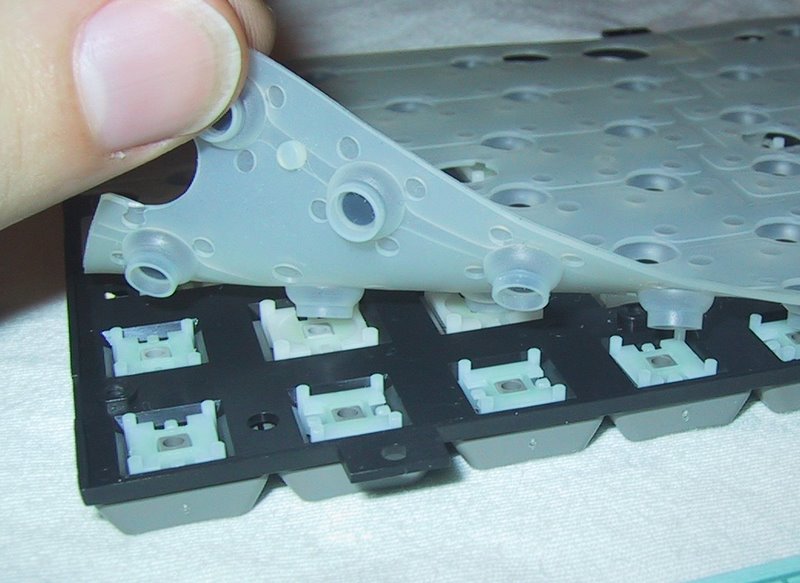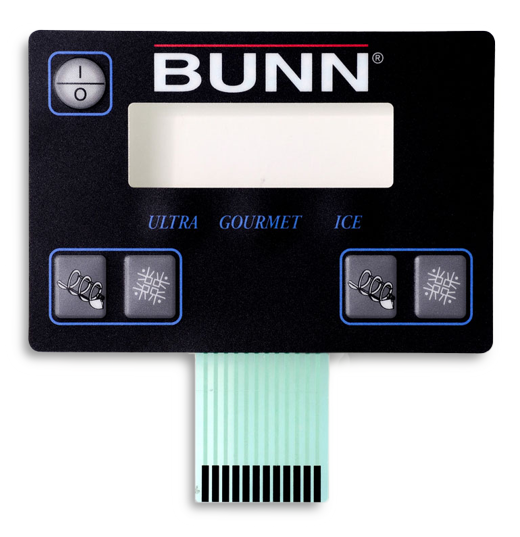Learn more about the Innovative Manufacturing Techniques Behind Membrane Switches
Learn more about the Innovative Manufacturing Techniques Behind Membrane Switches
Blog Article
The Ultimate Resource on Membrane Layer Changes: Layout, Performance, and Applications
Membrane changes function as an appealing intersection of design and functionality, playing a critical function in modern individual interfaces across various sectors. This resource unloads the crucial parts that add to their efficiency, consisting of visuals overlays and circuit traces, while likewise illuminating the mechanisms behind their stress activation. As we check out the diverse applications of membrane layer switches, it comes to be noticeable that their versatility and sturdiness are essential in atmospheres ranging from health care to consumer electronic devices. Nonetheless, the nuances of their style and functional principles may reveal even deeper understandings worth thinking about.

Recognizing Membrane Switches
Membrane switches are a type of interface modern technology widely made use of in numerous digital tools, identified by their slim, flexible style and performance. These buttons include several layers that consist of visuals overlays, adhesive layers, and circuitry, enabling a small and effective user interface for individuals. They can be found in devices, medical devices, and industrial control panels, giving a trustworthy method for individual communication.
One of the key advantages of membrane switches is their capacity to resist contaminants such as dust and moisture, making them appropriate for settings where longevity is necessary. Their low-profile design permits seamless assimilation into various applications, while the customizable visuals overlays enhance individual experience by giving clear visual comments. Furthermore, membrane switches can suit a selection of innovations, such as tactile feedback and backlighting, more boosting their use.
The production procedure for membrane switches over normally involves display printing, die-cutting, and lamination strategies, making sure precision and uniformity in manufacturing. In general, membrane changes stand for a reliable and functional service for modern-day digital gadgets, combining functionality with visual appeal in customer interface design.
Secret Components and Style Elements
A selection of key elements and design aspects integrated to develop a reliable membrane switch. At the core, the visuals overlay serves both functional and aesthetic purposes, providing a straightforward interface while shielding inner parts from ecological variables. The selection of products, generally polyester or polycarbonate, affects resilience and tactile feedback.
Beneath the overlay, the sticky layer ensures the button sticks safely to the substrate, which can be glass, metal, or plastic. The spacer layer is important, as it preserves the essential gap in between the overlay and the circuit layers, enabling for efficient actuation. Membrane Switches. Circuit traces, usually made from conductive ink or adhesive, are printed on a flexible substrate, allowing electric signals to be transmitted when pressure is used
Style factors to consider additionally consist of the plan of tactile domes or embossing that give physical responses to the customer, boosting the overall experience. Furthermore, the design and spacing of the buttons need to be optimized for simplicity of usage, ensuring that customers can navigate the interface intuitively. In general, these parts and layout aspects work synergistically to develop a trustworthy, practical membrane layer switch tailored to certain applications.
Performance and Procedure Mechanism
At the heart of effective functionality for membrane switches over exists their functional mechanism, which helps with customer communication via an easy yet efficient style. These switches operate the concept of stress activation, where a customer applies force to a marked area of the button (Membrane Switches). This activity compresses the layers of the button, finishing an electrical circuit that sends a signal to the linked gadget
The construction normally consists of a leading visuals layer, a sticky spacer layer, and a bottom circuit layer, which collectively form a robust interface. When stress is used, the top layer collapses against the lower circuit layer, enabling conductive traces to attach. This design not only makes it possible for clear responsive feedback but additionally makes certain durability and reliability, as the switches are usually immune to dirt and wetness.
Additionally, the flexibility of membrane layer switches enables combination with different innovations, including LED signs and microcontrollers, improving their capability. By offering a structured interface that lessens mechanical wear, membrane layer switches remain a preferred option in applications ranging from customer electronics to commercial devices, making certain optimum efficiency and individual satisfaction throughout varied atmospheres.
Sorts Of Membrane Layer Buttons

One more considerable category is brightened membrane layer buttons, which integrate backlighting to boost presence in low-light problems. These switches are usually used in control panels and dashboards where clear visibility is vital.
Furthermore, there are custom-made membrane layer switches over created to satisfy certain dimensional, visual, and functional needs. These personalizations can consist of special forms, colors, and layouts, permitting smooth integration into numerous gadgets.

Applications Across Numerous Industries
Exactly how do membrane layer buttons enhance functionality across varied markets? In the medical field, membrane layer buttons play a crucial role in tools such as analysis tools and person tracking systems, where integrity and convenience of cleaning are critical.
In the automobile industry, membrane switches are generally made use of in dashboards and control board, giving instinctive controls that improve vehicle driver safety and ease. The customer electronics field likewise takes advantage of their lightweight and adjustable functions, making it possible for streamlined styles for mobile phones and home devices.
In addition, membrane buttons locate applications in industrial automation, where they add to effective machinery procedure and monitoring systems. Their resistance to dust and dampness ensures functionality sought after problems (Membrane Switches). Additionally, the food and drink sector employs membrane layer buttons for equipment control, where health and sturdiness are crucial
Conclusion
In verdict, membrane switches stand for a crucial innovation in customer interface technology, characterized by their distinct style and performance. The flexibility of membrane layer switches promotes their application throughout diverse sectors, from clinical tools to consumer electronics.
Membrane layer changes offer discover this info here as an appealing crossway of style and performance, playing a critical function in modern-day user interfaces throughout various fields.Membrane layer switches are a kind of customer interface modern technology extensively used in different digital gadgets, defined by their thin, flexible layout and performance.At the heart of effective functionality for membrane switches over exists their functional mechanism, which facilitates individual interaction through site a straightforward yet efficient design. These switches run on the principle of pressure activation, where an individual applies force to an assigned area of the switch.In verdict, membrane changes represent a crucial advancement in user interface modern technology, characterized by their special design and performance.
Report this page